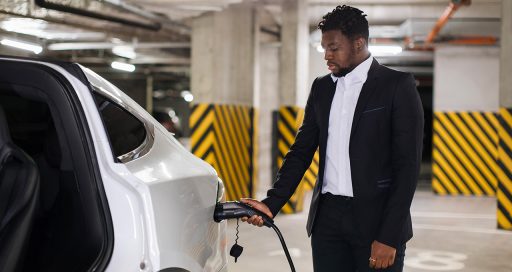Solar Boat Challenge: Dutch students make a technological breakthrough
Reading time: 4 min
Students at the University of Twente made a breakthrough in electric mobility by equipping the boat they entered in the 2018/2019 Solar & Energy Boat Challenge with a powerful submerged motor and state-of-the-art photovoltaic cells. Omexom supported the adventure.![]()
Every year, a new team at the University of Twente in the Netherlands takes part in the Solar & Energy Boat Challenge*. To build the powerful boat they entered in July 2018 to take part in the 2018/2019 Solar & Energy Boat Challenge in Monaco, students at the Dutch University combined several innovative electric mobility solutions. First, they decided to cover the deck of the boat, which they built in less than a year, with Maxeon-type silicon photovoltaic cells.
“This type of cell has very high energy efficiency and is highly resistant to corrosion, temperature fluctuations and impact,” says Thomas Kolkman, the university team’s engineer. The 10.5 sq. metre set of photovoltaic cells installed on the deck generate 1,900 Watts, which is more than adequate to travel at high speed and charge a 1.5 kWh battery.
“This experiment combines innovations and addresses the full range of day-to-day challenges that we and our customers face in managing all aspects of the energy transition.”
The Twente students innovated in other ways as well to reduce the boat’s weight and boost its energy efficiency. “We worked on the weight of the frame, using 3D printing to build hollow elements such as the uprights, which weigh hardly more than an apple,” says Rob van Zee, the technical leader of the Solar Boat Twente team for this edition of the Challenge.
“We also used foils to raise the hull out of the water and thus increase its speed, and we opted to use an electric pod motor, a sort of submerged bulb that is placed immediately behind the propeller to optimise energy and propulsive efficiency,” he adds. In addition, says Thomas Kolkman, “the water directly cools the ‘pod-drive’, which boosts electricity production by the motor.”
Energy optimisation
Omexom sponsored the particularly creaative crew. The choice was strategic, says Maarten de Vries, Client Manager at Omexom Zwolle (VINCI Energies), since “Even on a small scale, this experiment combines innovations and addresses all the day-to-day challenges that we and our customers face in managing all aspects of the energy transition.”
Omexom, which did not supply technology for the version of the Solar Boat that raced in Monaco in July 2018, initiated a dialogue with the students to see how it could help them. “Omexom can be an invaluable partner in energy optimisation, says Rob van Zee, “and it can help protect the electrical systems, which are exposed to the harsh marine environment, and substantially extend their lifespan.”
Maarten de Vries mentions another objective: “designing a mobile weather station with a flow of data to optimise the boat’s operation in real time during the race.” The Omexom manager mentions that within Omexom, the Duivendrecht business unit specialises in solutions based on SCADA and RTU – supervisory control and data acquisition systems and remote terminal units.
In another race in 2017, this time on land, Axians, another VINCI Energies brand, helped students in Eindhoven, again in the Netherlands, who were taking part in the World Solar Challenge to maximise solar capture according to variations in weather conditions.
One thing is crystal clear to Omexom and to the University of Twente team: the photovoltaic cells tested on the Solar Boat under difficult ocean racing conditions open up new prospects in all areas of electric mobility, including the roofs of cars.
Updated on 10/12/2019




